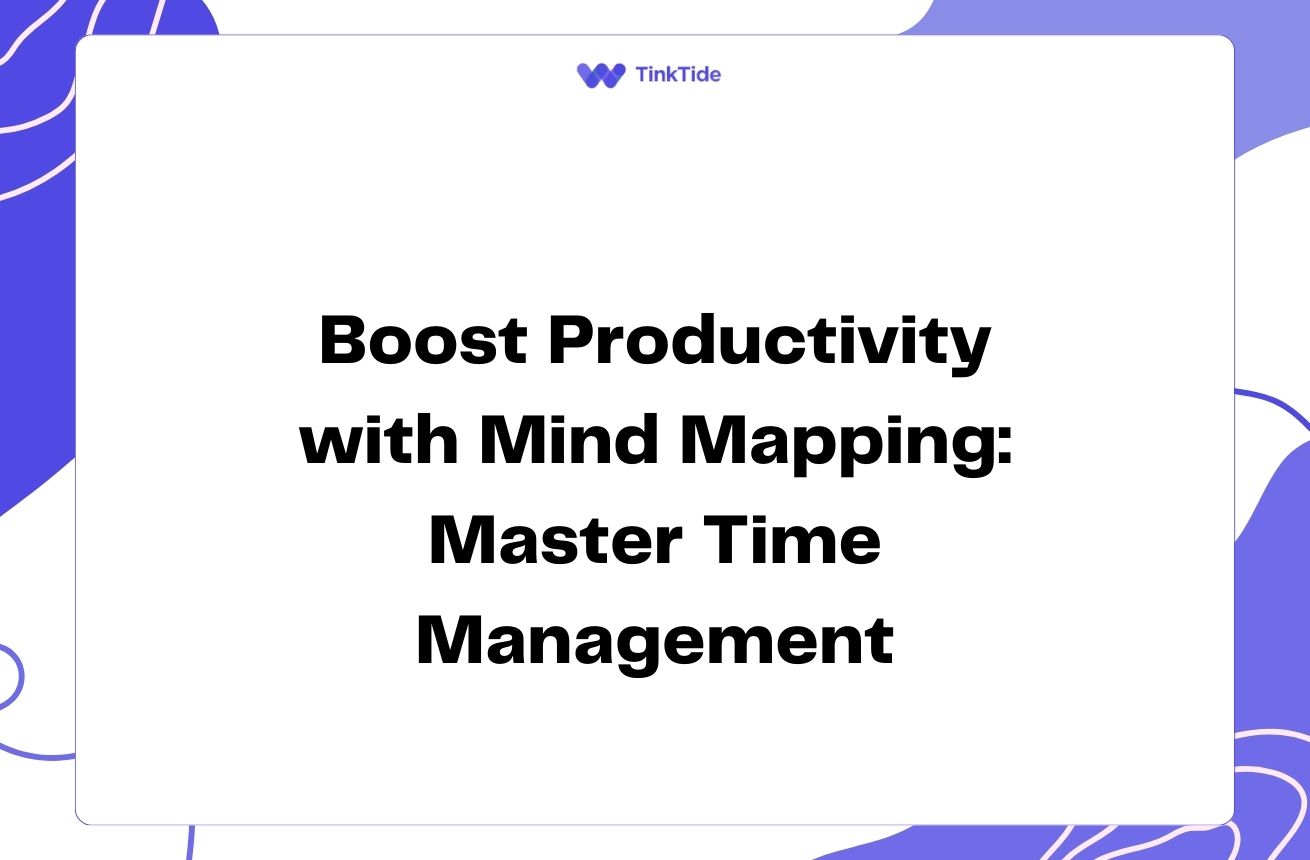Mind Mapping: Boost Productivity and Streamline Tasks
What is Mind Mapping?
Mind mapping is a powerful visual thinking tool that helps you organize information, generate ideas, and make connections between concepts. It's like creating a roadmap for your thoughts, with a central idea branching out into related subtopics and details.
Invented by Tony Buzan in the 1970s, mind mapping has gained popularity as a versatile technique for boosting creativity and productivity. By using colors, images, and spatial relationships, mind maps tap into both the logical and creative sides of your brain, making information easier to remember and understand.
Whether you're a student, professional, or creative thinker, mind mapping can help you break down complex ideas, plan projects, and solve problems more efficiently. Let's explore how you can use this powerful tool to streamline your tasks and increase your productivity.
Benefits of Mind Mapping for Task Management
Mind mapping offers numerous advantages when it comes to managing tasks and boosting productivity. Here are some key benefits:
- Clarity and organization: Visualize your tasks and their relationships
- Improved memory: Engage both hemispheres of your brain for better recall
- Enhanced creativity: Encourage free-flowing ideas and connections
- Time-saving: Quickly capture and organize thoughts
- Flexibility: Easily update and rearrange information as needed
How to Create an Effective Mind Map
Creating a mind map is a simple process that can yield powerful results. Follow these steps to get started:
1. Start with a central idea: Begin by writing your main topic or project in the center of a blank page or digital canvas. This forms the core of your mind map.
2. Branch out with main themes: Draw lines radiating from the central idea, each representing a major subtopic or category related to your main theme. Keep these branches thick and curved for better visual appeal.
3. Add secondary branches: From each main branch, create smaller offshoots to represent related subtopics or details. Continue this process, creating increasingly specific branches as needed.
4. Use colors and images: Incorporate different colors for each main branch and its offshoots. Add relevant images or symbols to make your mind map more memorable and engaging.
Streamlining Tasks with Mind Maps
Mind maps can be particularly effective for streamlining tasks and increasing efficiency in various areas of your work and personal life. Here are some practical applications:
Project planning: Use a mind map to break down large projects into manageable tasks. Start with the project name in the center and branch out into main phases, then further into specific tasks and deadlines.
Meeting notes: Capture key points during meetings using a mind map structure. This allows you to quickly organize information and identify action items.
Problem-solving: When faced with a complex problem, create a mind map to explore different aspects and potential solutions. This can help you identify patterns and connections you might otherwise miss.
Goal setting: Map out your short-term and long-term goals, along with the steps needed to achieve them. This visual representation can help you stay motivated and track your progress.
Digital Tools for Mind Mapping
While traditional pen-and-paper mind mapping is effective, digital tools offer additional features and flexibility. Here are some popular mind mapping software options:
- MindMeister: A collaborative online mind mapping tool
- XMind: Offers both free and paid versions with advanced features
- Coggle: A simple, user-friendly mind mapping tool with real-time collaboration
- MindMup: A free, open-source mind mapping platform
- GoConqr: Part of a larger learning platform with mind mapping capabilities
Integrating Mind Mapping into Your Workflow
To make the most of mind mapping for productivity, try incorporating it into your daily or weekly routine. Here are some tips:
- Start your day with a mind map: Plan your tasks and priorities for the day
- Use mind maps for brainstorming sessions: Encourage free-flowing ideas
- Create project outlines: Organize your thoughts before diving into detailed work
- Review and update regularly: Keep your mind maps current and relevant
Common Pitfalls to Avoid
While mind mapping is a powerful tool, there are some common mistakes to watch out for:
Overcomplicating: Keep your mind maps simple and focused. Too much detail can be overwhelming and counterproductive.
Ignoring the visual aspect: Remember to use colors, images, and spatial relationships to enhance understanding and memory.
Not reviewing or updating: Mind maps are living documents. Regularly revisit and update them to maintain their usefulness.
Limiting yourself: Don't be afraid to experiment with different styles and approaches to find what works best for you.
Address common questions
Here are some frequently asked questions about mind mapping for productivity:
How long does it take to create an effective mind map?
The time required varies depending on the complexity of the topic and your familiarity with mind mapping. A simple mind map can be created in just a few minutes, while more detailed ones might take 15-30 minutes. With practice, you'll become faster and more efficient.
Can mind mapping replace traditional to-do lists?
While mind mapping can be a great complement to traditional to-do lists, it's not necessarily a replacement. Mind maps are excellent for organizing ideas and seeing the big picture, while to-do lists are often better for linear, actionable tasks. Many people find using both methods in tandem to be most effective.
Is mind mapping suitable for collaborative work?
Absolutely! Mind mapping can be an excellent tool for collaborative brainstorming and project planning. Many digital mind mapping tools offer real-time collaboration features, allowing team members to contribute and edit simultaneously.
How often should I update my mind maps?
The frequency of updates depends on the purpose of your mind map. For ongoing projects or evolving ideas, it's best to review and update your mind maps regularly, perhaps weekly or bi-weekly. For more static information, less frequent updates may suffice.
Can mind mapping help with memory and learning?
Yes, mind mapping can be a powerful tool for memory and learning. The visual nature of mind maps, combined with the process of organizing information, can help reinforce concepts and improve recall. Many students find mind mapping particularly useful for summarizing and reviewing complex subjects.
Provide additional resources
The Mind Map Book
Tony Buzan's comprehensive guide to mind mapping techniques
Mind Mapping for Dummies
A beginner-friendly introduction to mind mapping
iMindMap
Mind mapping software developed by Tony Buzan's team
Mind Mapping 101
A comprehensive guide to mind mapping by MindMeister
Mind Mapping for Project Management
Tips on using mind maps specifically for project management
Summarize key takeaways
Mind mapping is a versatile and powerful tool for boosting productivity and streamlining tasks. By visually organizing information, you can enhance creativity, improve memory, and gain clarity on complex projects and ideas.
Remember to start with a central idea, branch out into main themes, and use colors and images to make your mind maps more engaging and memorable. Whether you're planning projects, taking notes, or brainstorming solutions, mind mapping can help you work more efficiently and effectively.
Start incorporating mind mapping into your daily routine and experiment with different techniques and tools to find what works best for you. With practice, you'll discover how this simple yet powerful method can transform your approach to task management and boost your overall productivity.
Supercharge Your Productivity with Mind Mapping
Ready to streamline your tasks and boost your efficiency? Try our mind mapping tools today!
Start Your Free Trial
